It’s only a few years since disc brakes were anathema to many road riders. Pro riders were especially vociferous in expressing their disapproval – or, at worst, hatred – of the new braking technology.
Step forward to 2024 and all WorldTour bikes will be kitted out with discs.
Bike makers have switched their output almost exclusively to disc brakes. Even teams, such as UAE Team Emirates who swapped between rims and discs as recently as 2022, now only ride disc brakes.
That switch away from rim brakes isn’t confined to premium models and has trickled down to budget road bikes too. They may have cable disc brakes rather than hydraulic systems, but you’ll find plenty of road bikes under £1,000 kitted out with disc brake rotors.
So what exactly are road disc brakes and why all the fuss? Are they really any different from other recent advancements in bike technology? And which braking system comes out on top when comparing disc brakes and rim brakes?
What are road bike disc brakes?
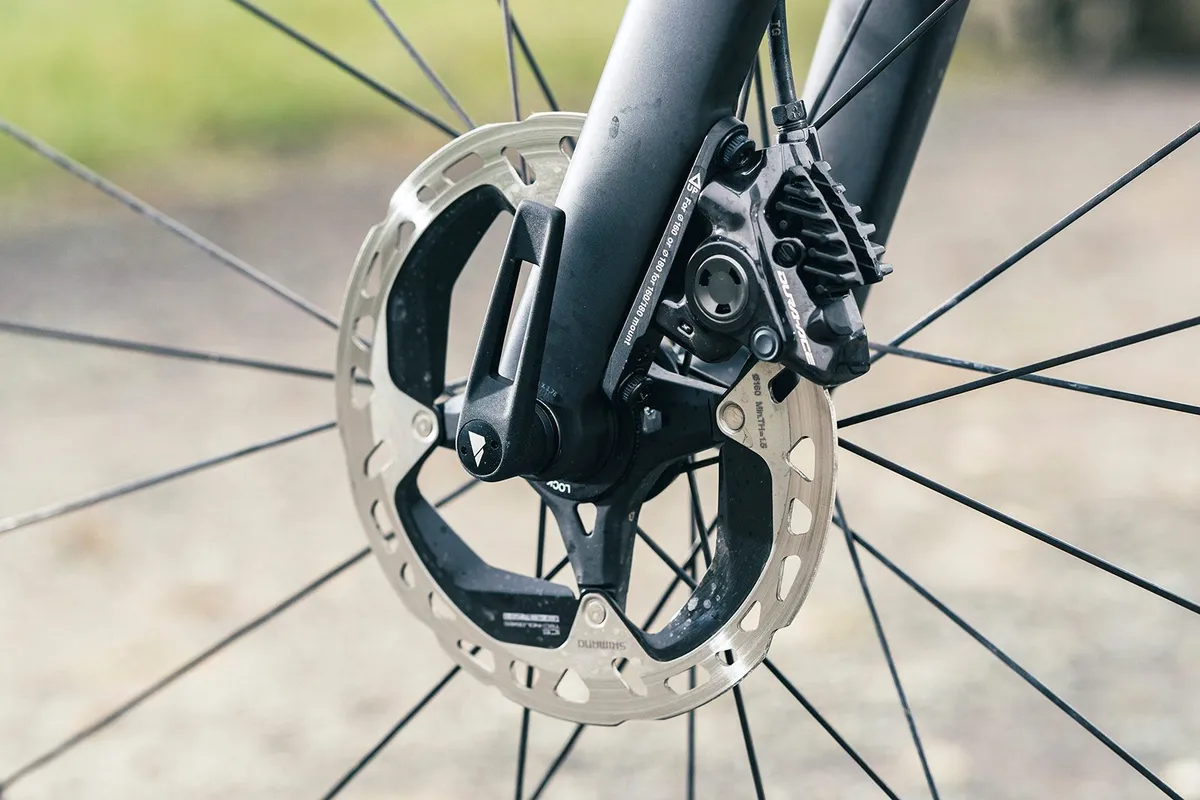
The most fundamental difference between traditional rim brakes and disc brakes is where the braking forces are applied.
As the name suggests – and just as it’s been done for decades – rim brakes clamp directly on to the sides of the wheel rim itself. In this way, the rim serves as a main structural component of the wheel, the mounting base for the tyre and the braking surface all in one.
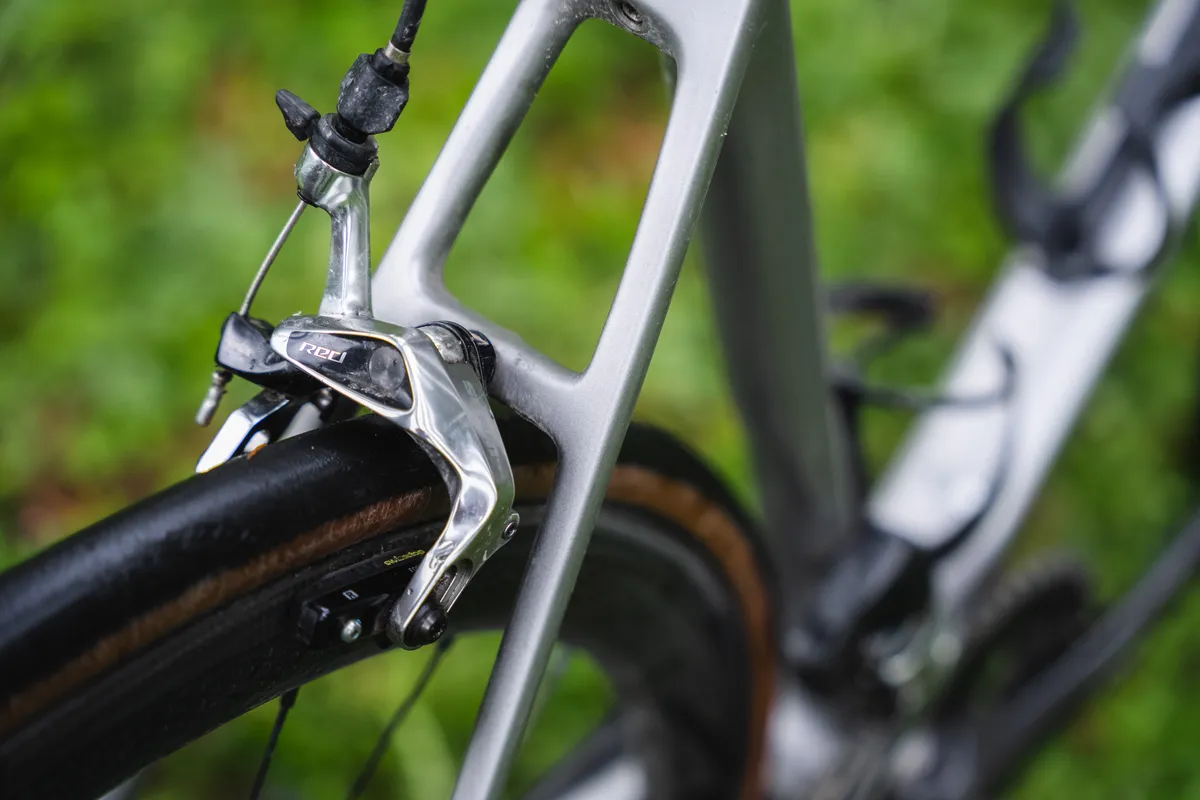
In contrast, disc brakes move all braking duties to a separate rotor that is much smaller in diameter and mounted directly to the hub – much like everyday automobiles or motorcycles, and pretty much all other wheeled vehicles.
The brake caliper is still mounted to the frame and fork but is situated much closer to each wheel axle.
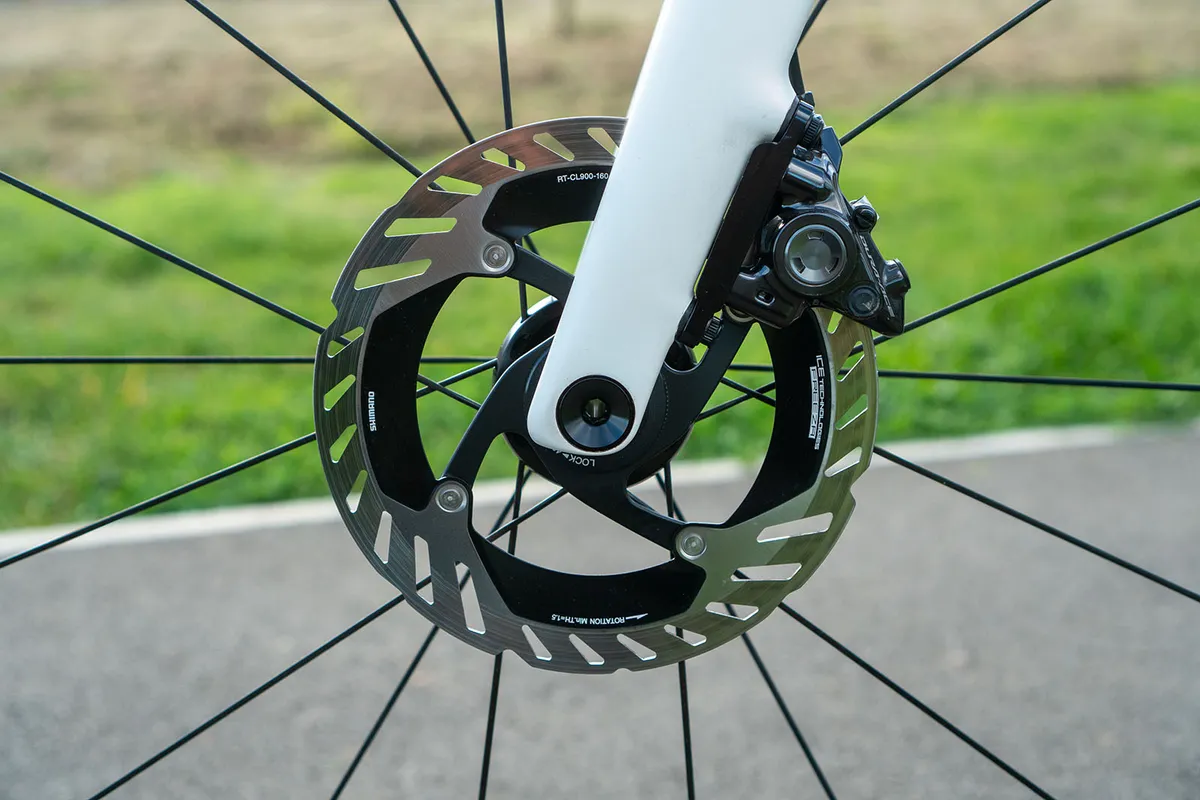
Another key difference is how each type of brake is usually operated. With a few rare exceptions, rim brakes are ‘cable-actuated’, meaning the levers are connected to the caliper with braided steel cables (bowden cables, to use the engineering term) that slide through some sort of housing.
You pull the lever, which then pulls on the cable, which then forces the caliper to clamp down on the rim.

Disc brakes are more often than not of the fully hydraulic variety, where the cable and housing are replaced by a non-compressible fluid and a hose in a fully sealed system.
When you pull the lever on a hydraulic brake, it pushes a plunger in a ‘master cylinder’, which then pushes that fluid through a hose to the caliper at the other end. That hydraulic pressure is what pushes the caliper pistons out and clamps the disc brake pads onto the rotor.

Like a rim brake, a cable-operated disc brake has a wire running to the brake mechanism, but in this case the cable pulls one or two of the pads in the caliper together to squeeze against the rotor.
Cable-operated disc brakes are cheaper and slightly less efficient than hydraulic disc brakes due to the friction and stretch in the cables, and are normally found on lower-priced bikes.
Who makes road disc brakes?
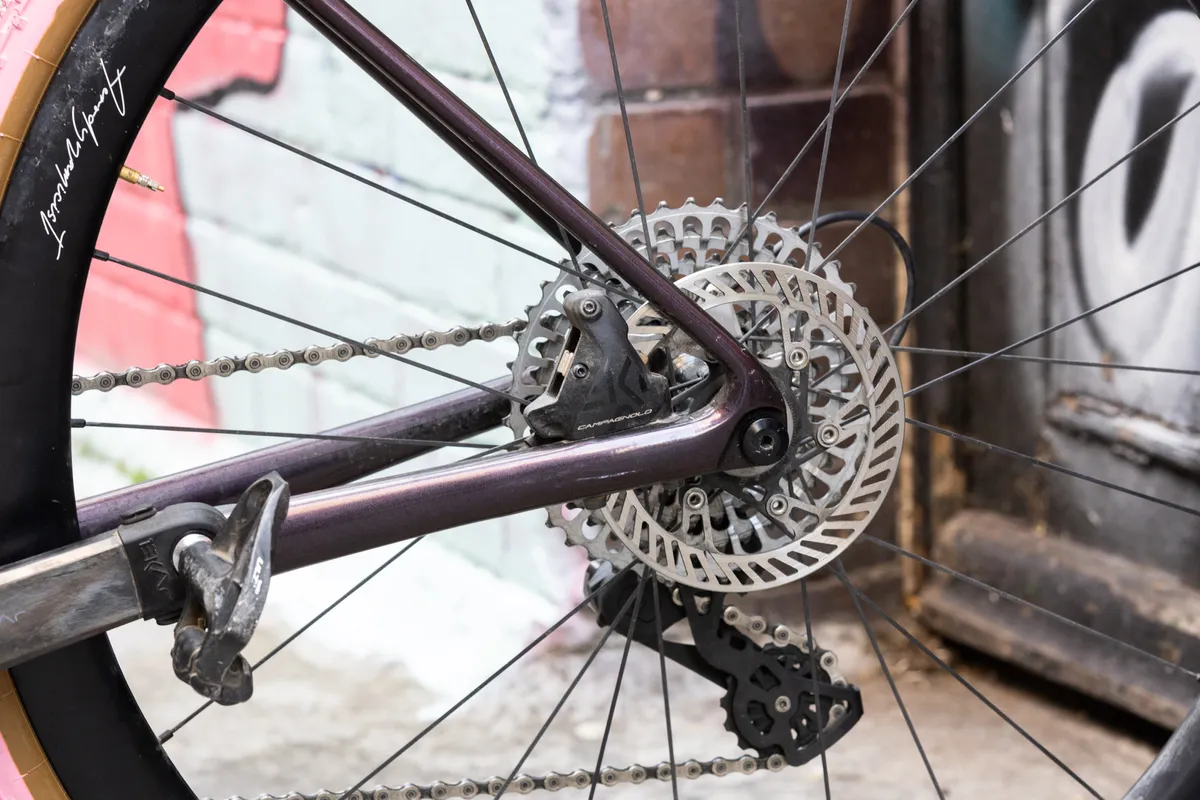
SRAM was first to market with a disc-specific road bike groupset, although there were mechanical disc brake options from Avid and others available before its 2012 Red Hydro R came along.
That was followed in 2013 by Shimano and finally in 2016 by Campagnolo, so you can now find options from all the major road groupset manufacturers.
Initially disc brake options were limited, but all three brands have now trickled hydraulic disc brakes as an alternative to rim brakes into most of their groupsets. They're a mainstay of groupsets designed for gravel bikes, including Shimano GRX and Campagnolo Ekar, and single-chainring drivetrains.
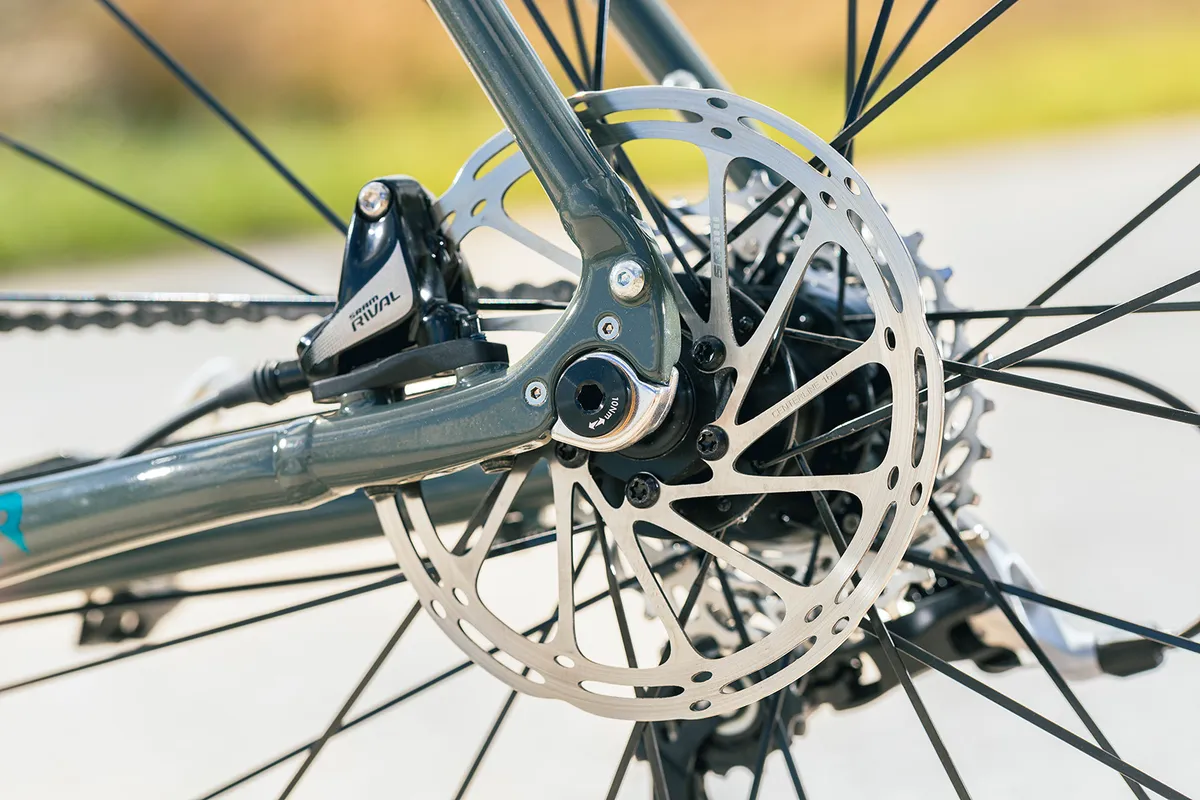
This means you can find disc brakes at a wide range of price points, including the top-tier Shimano Dura-Ace Di2 R9200, SRAM Red eTap AXS and Campagnolo Super Record Wireless groupsets.
The technology is also now available right down to cheaper options: SRAM Apex, Shimano Tiagra (which may soon be replaced by Shimano Cues) and Campagnolo Chorus. Shimano also offers a mechanical disc brake option for Sora.
Alongside hydraulic disc brakes from the big three, you can often find mechanical disc brakes on lower-priced bikes: TRP (which also makes the Hy/Rd mechanical/hydraulic hybrid caliper), Hayes and SRAM's Avid brand are common options.
Disc brakes vs rim brakes: why disc brakes are better than rim brakes
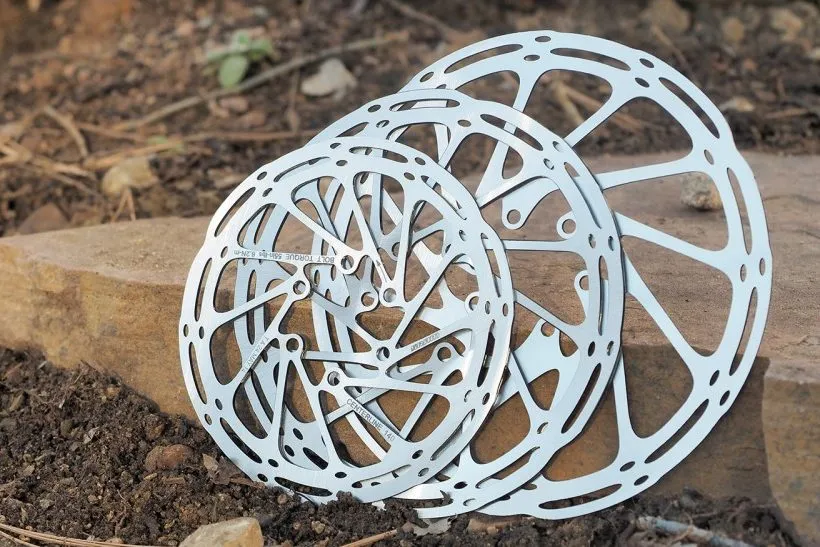
Disc brakes offer several key advantages over rim brakes.
First, they generate much more stopping power, meaning there’s less force required at the lever to generate the same amount of deceleration as on a rim brake.
This can be a big help on long and steep descents where ‘arm pump’ can eventually set in, or for heavier riders who have struggled to find enough power from traditional brakes (the same issue applies to heavier bikes, such as touring bikes and tandems).
An added bonus is that braking power can be boosted (or tempered, depending on your preferences) by changing rotor sizes. A bigger rotor will increase the mechanical leverage and heat dissipation, while a smaller one will save weight for riders who just don’t need the extra braking force.
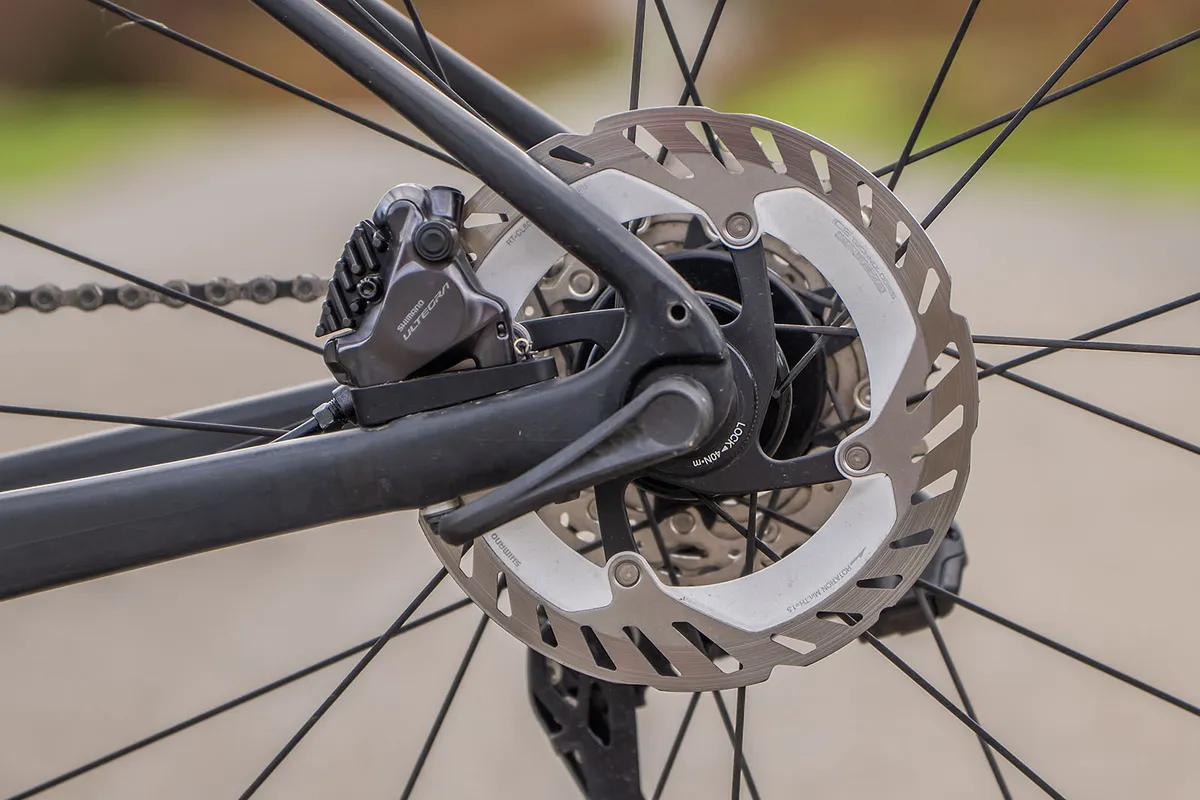
Granted, stopping power on any wheeled vehicle is inherently limited by traction. And as many of you will know (possibly through painful experience), it’s already quite easy to lock up a wheel on a bike with rim brakes – which brings us to advantage number two: control.
Disc brakes offer better modulation than rim brakes, meaning it’s easier for the rider to precisely meter out how much clamping power is generated. Peak stopping power occurs just before the point of lock-up, and disc-equipped bikes are better equipped to flirt with that edge without crossing over.
Disc brake power also tends to be more linear and predictable than on rim brakes, and it’s far more consistent in varying weather conditions, especially when compared with using rim brakes on carbon rims – a combination that yields notoriously poor performance in the wet, yet is also prone to overheating when dry.
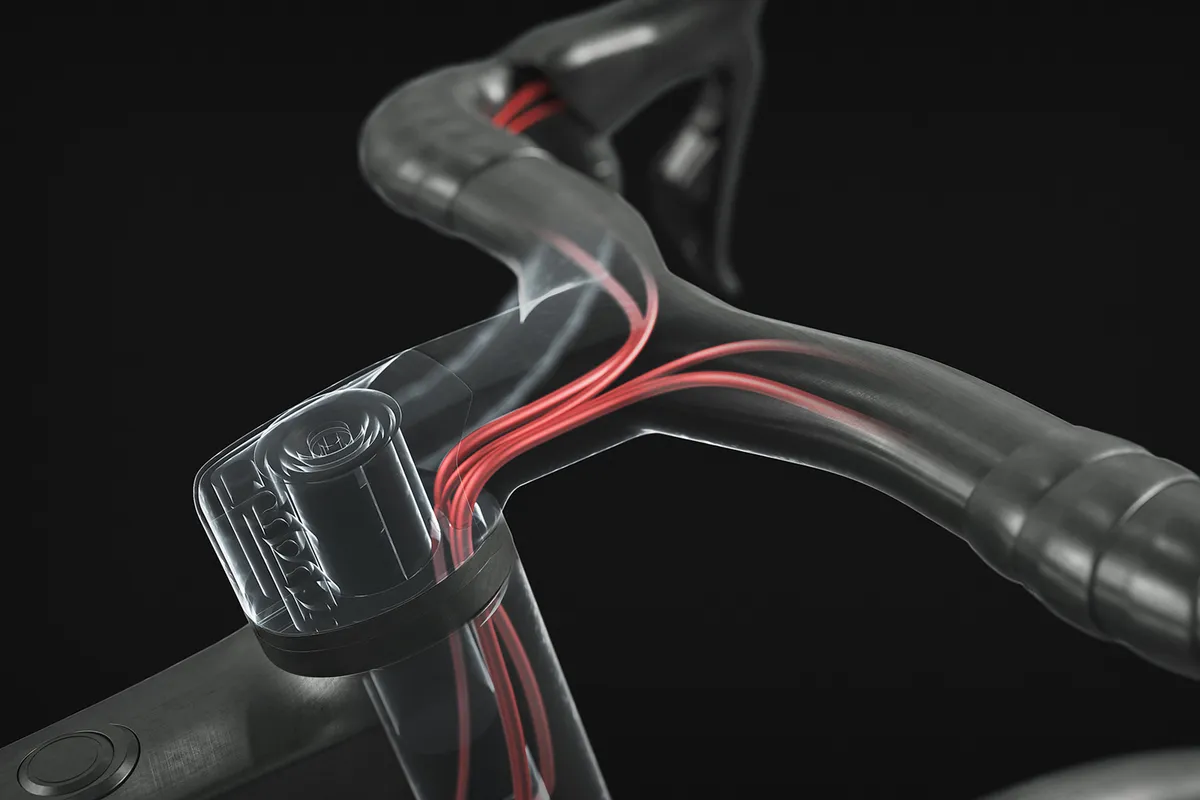
Another advantage of hydraulic disc brakes exploited by bike makers is that you’ll get the same braking efficiency regardless of how much the brake hose twists and turns.
That has enabled bike brands to develop complex internal routing and increase front-end integration, with hidden cable and hose runs from brake levers to point of action, and associated aerodynamic improvements.
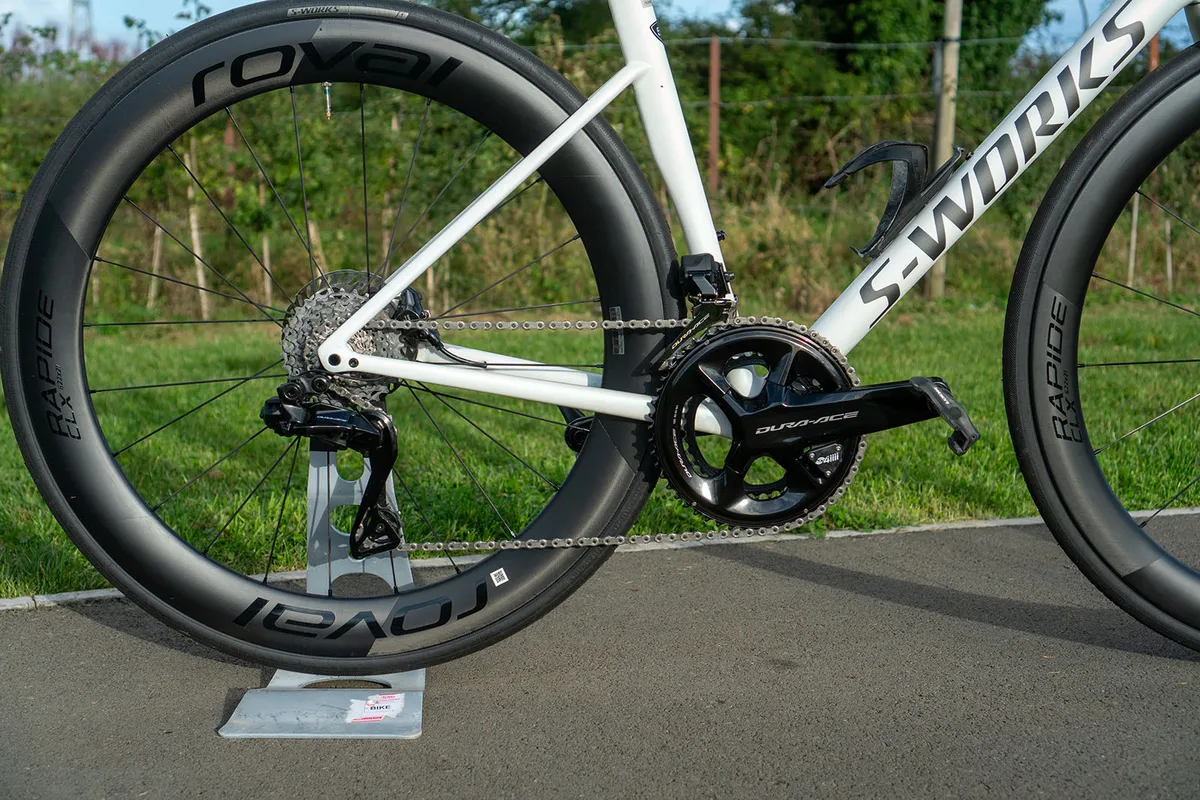
Disc brake wheel rims can also be made lighter than rim brake wheels. In a rim brake design, the need to handle the compressive force of the brake pads, the expansive force of the tyre and the heat generated by braking require greater strength and heat dissipation than a disc brake rim, where it’s just the tyre pressure that needs to be handled.
It’s easier to optimise the rim’s aerodynamics when designing for disc brakes too.
Likewise, disc brake frames can be built differently from rim brake frames. While there’s a need to beef up the left fork leg and left-side chainstay, there’s less force acting on other parts of the frame, which can be thinned out.
Bike makers have also learned how to make disc brake bikes as aerodynamic or more so than rim brake bikes.
Disc brakes vs rim brakes: why rim brakes are better than disc brakes
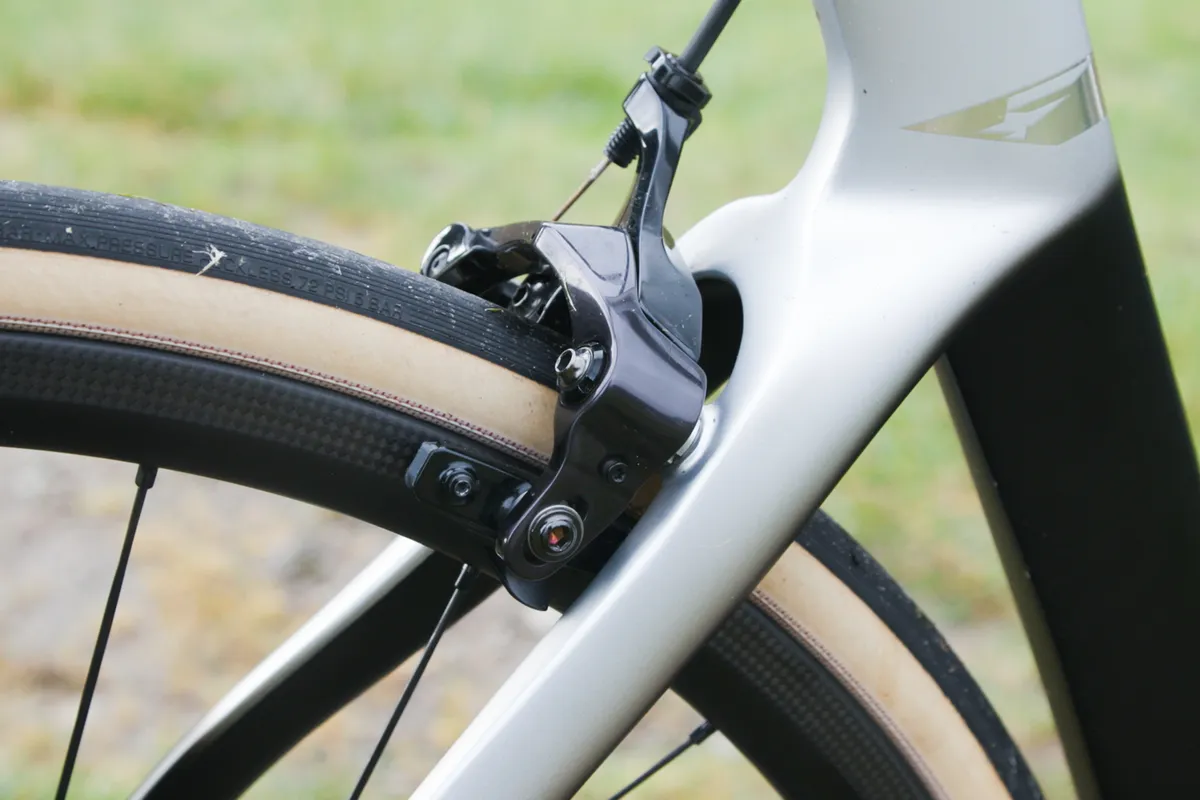
The biggest advantage of rim brakes is weight. Although disc and rim brake components themselves aren’t very different weight-wise, once you add the rotor, the system weight of a disc brake setup is typically a few hundred grams greater.
However, as we've covered in the previous section, wheels and frames for the latest generation of bikes can compensate for this.
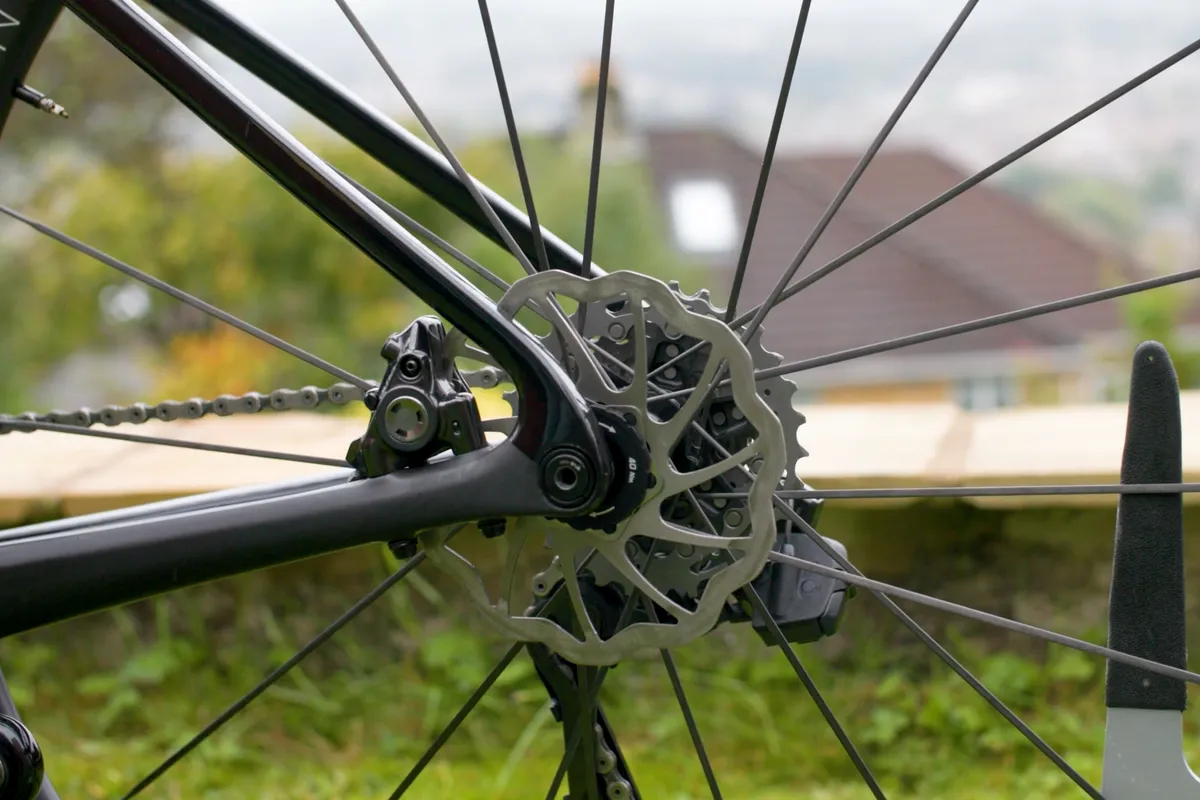
Rim brakes still dominate the weight-obsessed UK hill climb scene. But in 2023, Andrew Feather became the first man to win the National Championships on a disc-brake equipped bike.
The simplicity of cable-actuated rim brakes has plenty of upsides, though. Parts are generally cheap and widely available, and there’s a very high degree of compatibility between multiple brands and vintages.
Rim brake systems are easy to repair when needed – even on the side of the road, or in the middle of nowhere with limited availability of spare parts. Rim brakes are also easy to adjust, unlike some disc brake systems, where disc brake rub and squealing can be persistent issues.
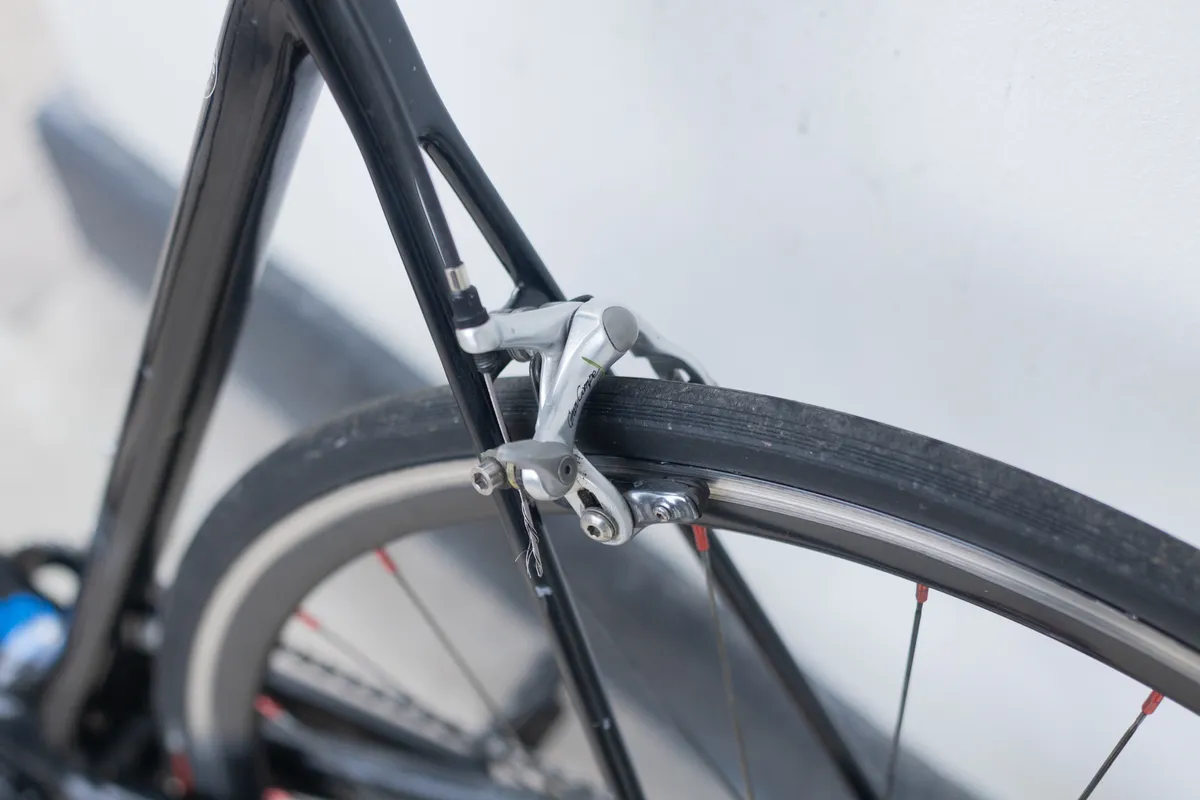
On top of that, it's worth pointing out that newer rim brake systems are better than ever, particularly on mid to high-end groupsets, and provide plenty of stopping power on tap.
There was an aesthetic argument that rim brake bikes are in some way prettier than disc brake ones, which was widely held when disc brake road bikes started to appear.
We’d say that argument is now less relevant. The clean lines that disc brakes and internal routing allow, particularly around the front end of the bike, more than compensate for the rotor.
How disc brakes change road bikes
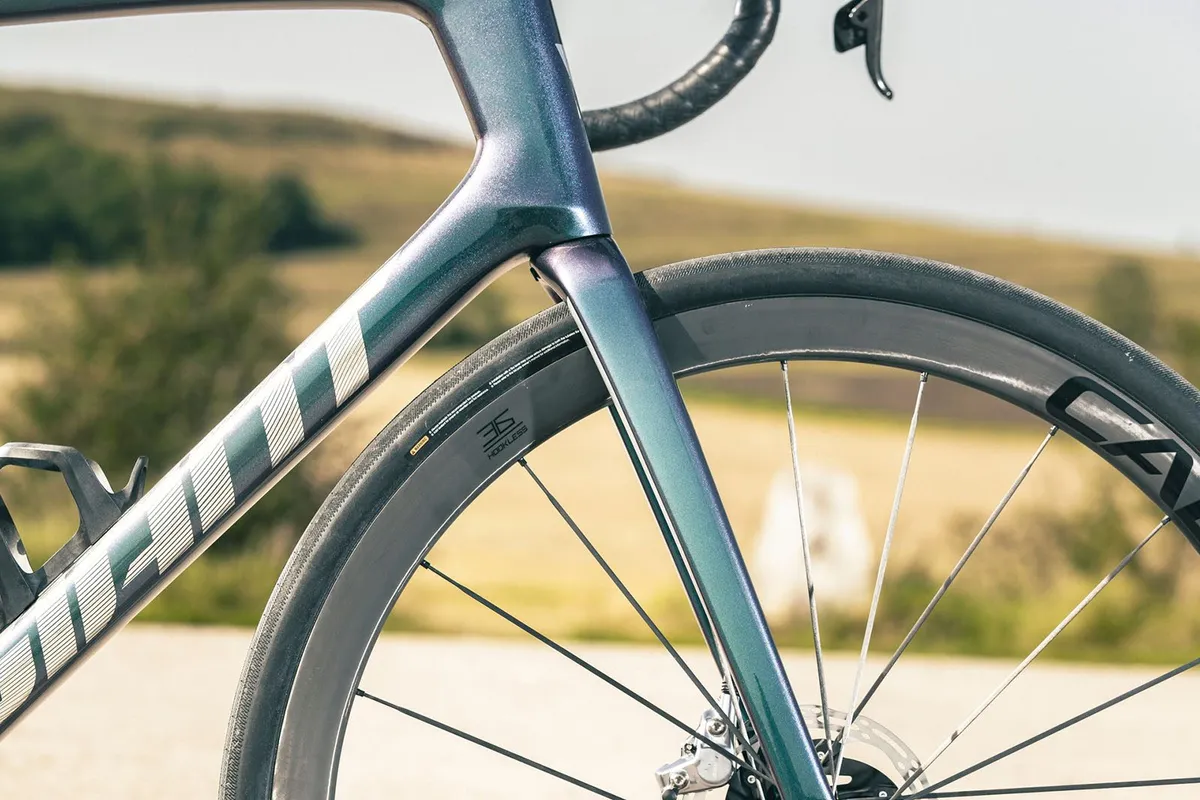
Cast aside the various conspiracy theories surrounding why the bike industry seems so hot on disc brakes. Of course, companies would love to sell more bikes and gear than they do now – that goes without saying.
However, history has repeatedly demonstrated that major changes in bike technology have only shifted the types of bikes and gear that people buy, not the grand total.
The fact of the matter is that the bike industry sees the road disc movement as a way to advance bike technology forward in a meaningful way in one big step. Bikes equipped with brakes that work better are safer, full stop (pun intended).
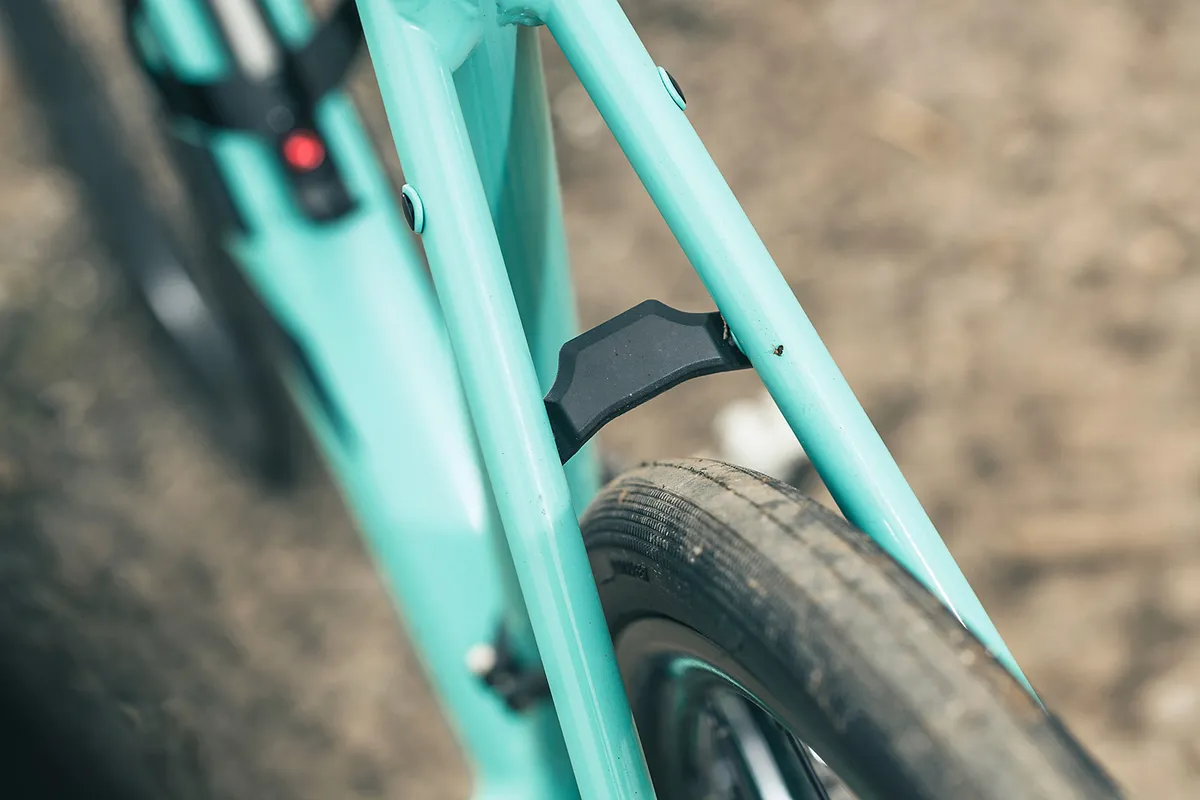
Without having to worry about accommodating a caliper, disc-equipped road bikes can more easily fit higher-volume road bike tyres and wider rims for improved traction and performance on a more diverse mix of terrain.
That’s opened up the chance for road riders to fit much wider tyres, with 28mm or more now being the norm on many road bikes, in place of the 23mm tyres of yesteryear. It’s a change that can make for a much more comfortable, grippier ride, without a significant downside in speed or aerodynamics.
Since the seatstays no longer have to be reinforced to accommodate a rim brake, they can be made more flexible too, also augmenting comfort.
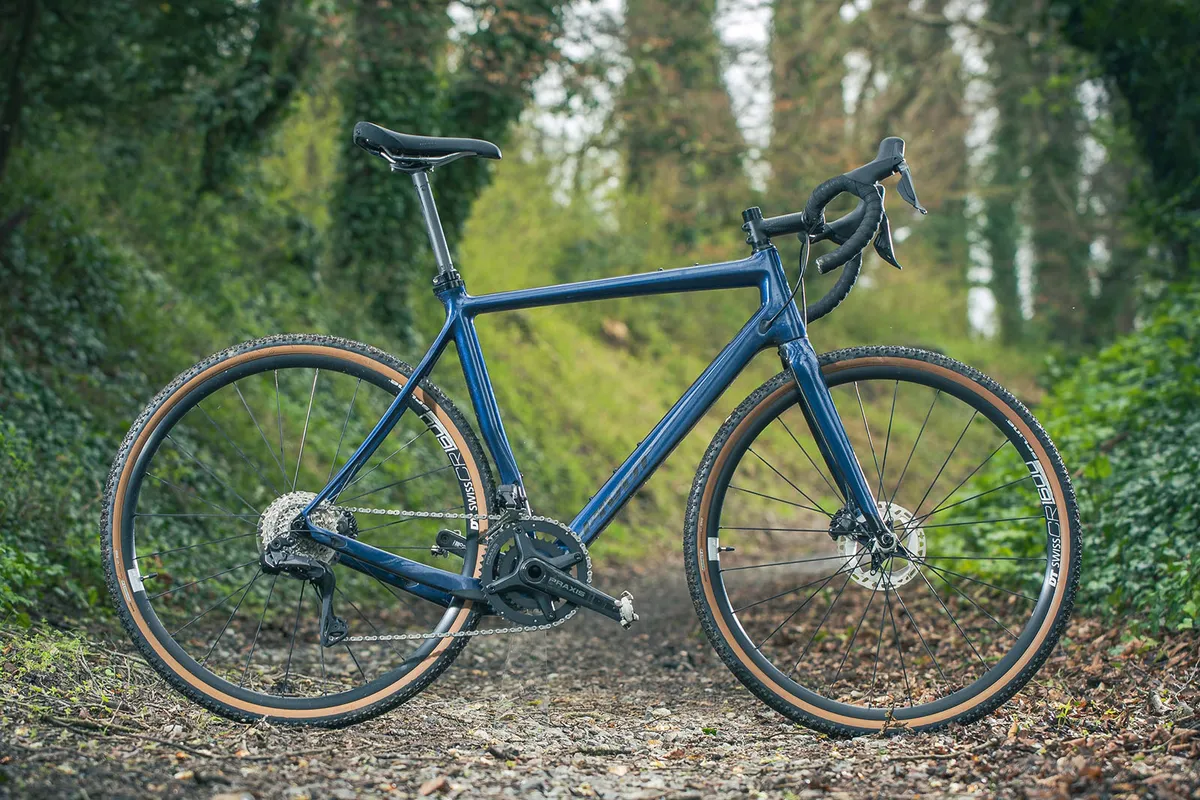
These changes are also driving the boom in gravel bikes and more capable endurance road bikes.
The move to disc brakes has come with a concurrent transition to thru-axles. Although it’s still faster to install and remove a wheel on a disc brake bike with quick-release skewers, there’s still too much variability in how the wheels fit into the frame and fork.
This can lead to issues ranging from annoying (pads rubbing on rotors) to terrifying (unanticipated wheel ejections under hard braking).

Thru-axles instead use closed dropouts that more consistently place the wheel in the same spot relative to the brake caliper, and are safer to use in general with less chance of user error.
They also provide a more rigid connection between the wheel and frame than quick-release hubs, so that a frame can be lighter without losing stiffness.
Road disc brake compatibility and standards
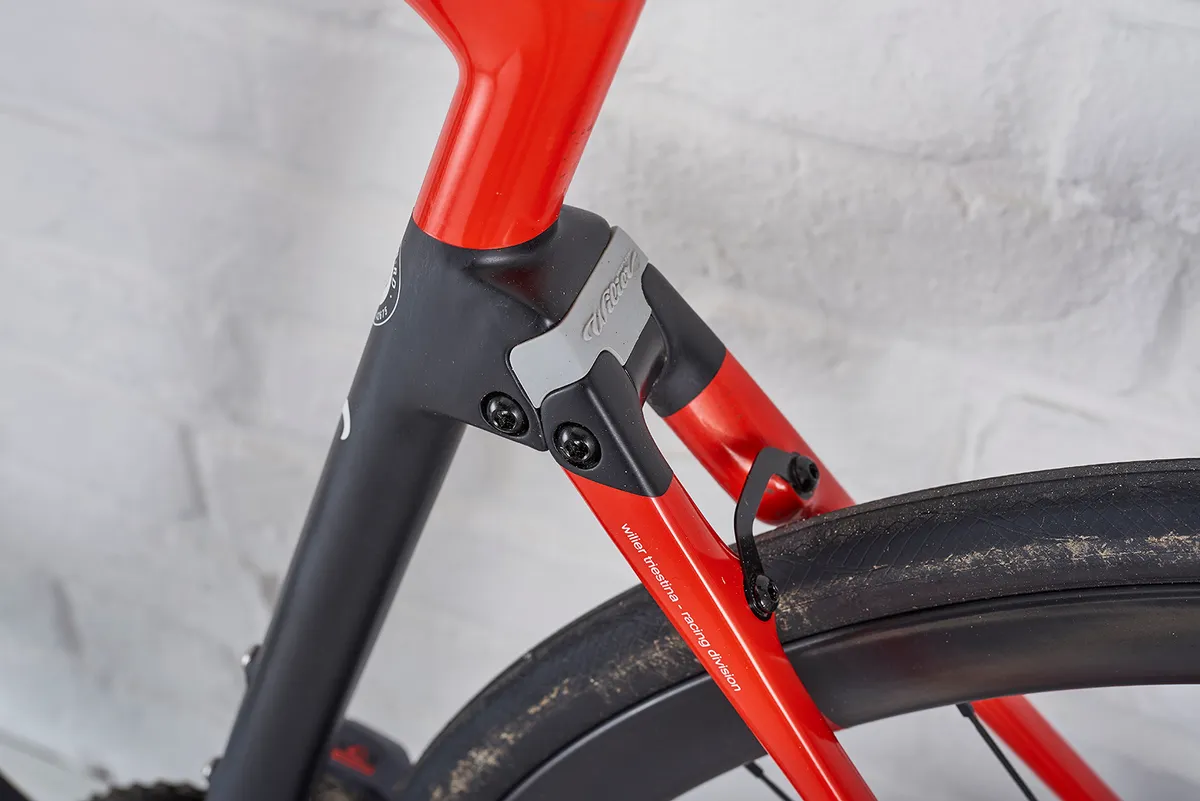
The switch to disc brakes means that bike makers have designed frames that are in general incompatible with rim brakes; you can’t fit disc brakes to a rim brake frame and you can’t swap from discs back to rim brakes, except in a few cases, such as the Wilier Cento10 NDR, which has been designed to allow you to fit either type of brake.
Disc brakes not only require dedicated fittings on the frame and fork for the caliper but, ideally, localised reinforcements to handle the added stresses applied.
Meanwhile, the wheels require hubs with either a six-bolt or Center-Lock splined interface to attach a rotor. Neither of these can simply be added after the fact.

There’s virtually no mixing and matching allowed between disc brake brands either, at least as far as hydraulic options are concerned. There’s a fair bit of flexibility for combining different makes and models of rim brakes, especially when you factor in smaller aftermarket brands, whereas disc brakes are much more limiting.
SRAM hydraulic disc brake calipers can only be paired with SRAM levers, for example, and the same goes for Shimano and Campagnolo.
Cable-actuated disc brakes from TRP, Paul Components, SRAM/Avid, Hayes and others offer more flexibility, but even then differing cable-pull ratios between the various makes, models and even years of levers have to be considered for optimal functionality.
Implications for long-term maintenance and serviceability
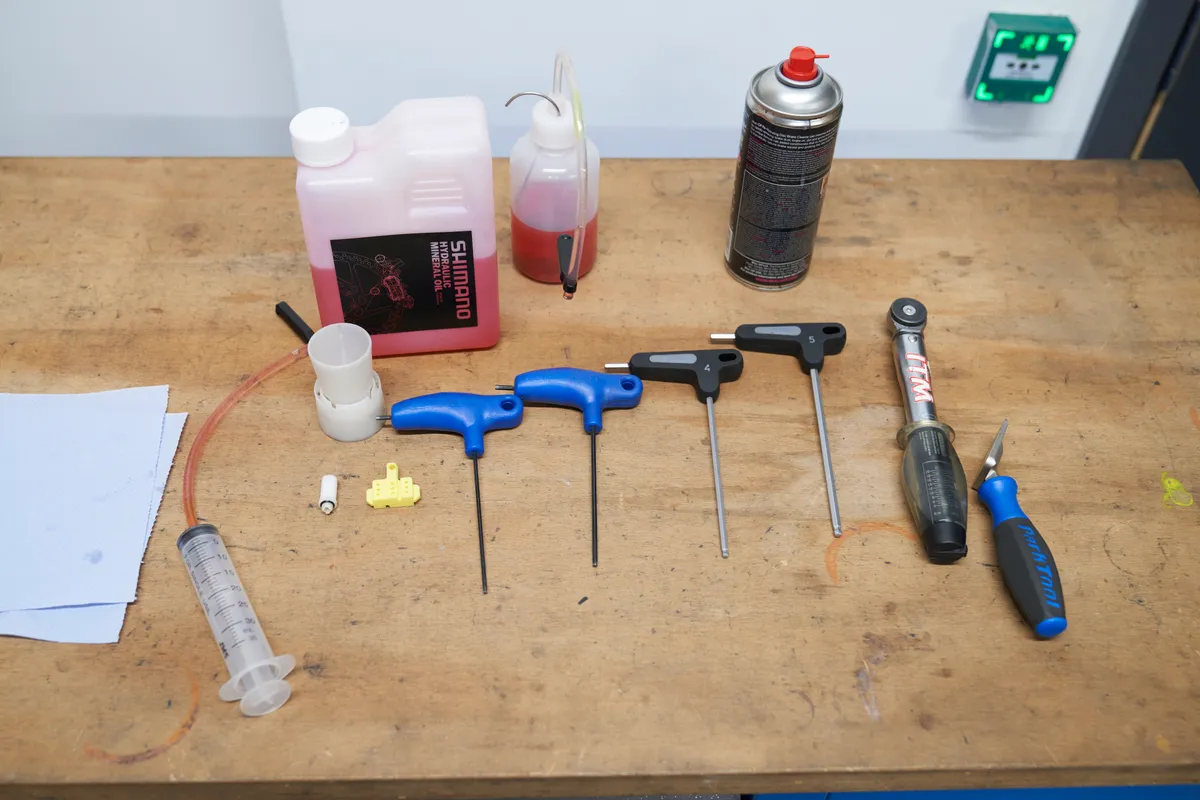
Hydraulic mountain bike disc brakes have long been widely accepted in the off-road market, so there’s plenty of history to go on in terms of long-term maintenance and serviceability, and it’s a mixed bag.
On the one hand, hydraulic disc brakes are fully sealed from the elements and require little-to-no everyday maintenance – most of the time (cable-actuated disc brake maintenance is more in line with conventional rim brakes). There’s also no housing for grit to get into and no cables to fray.
As an added bonus, they even self-adjust for pad wear so the lever pull stays consistent over time. Aside from occasionally bleeding the system with fresh fluid – most companies recommend doing this about once a year – there’s not much to it.
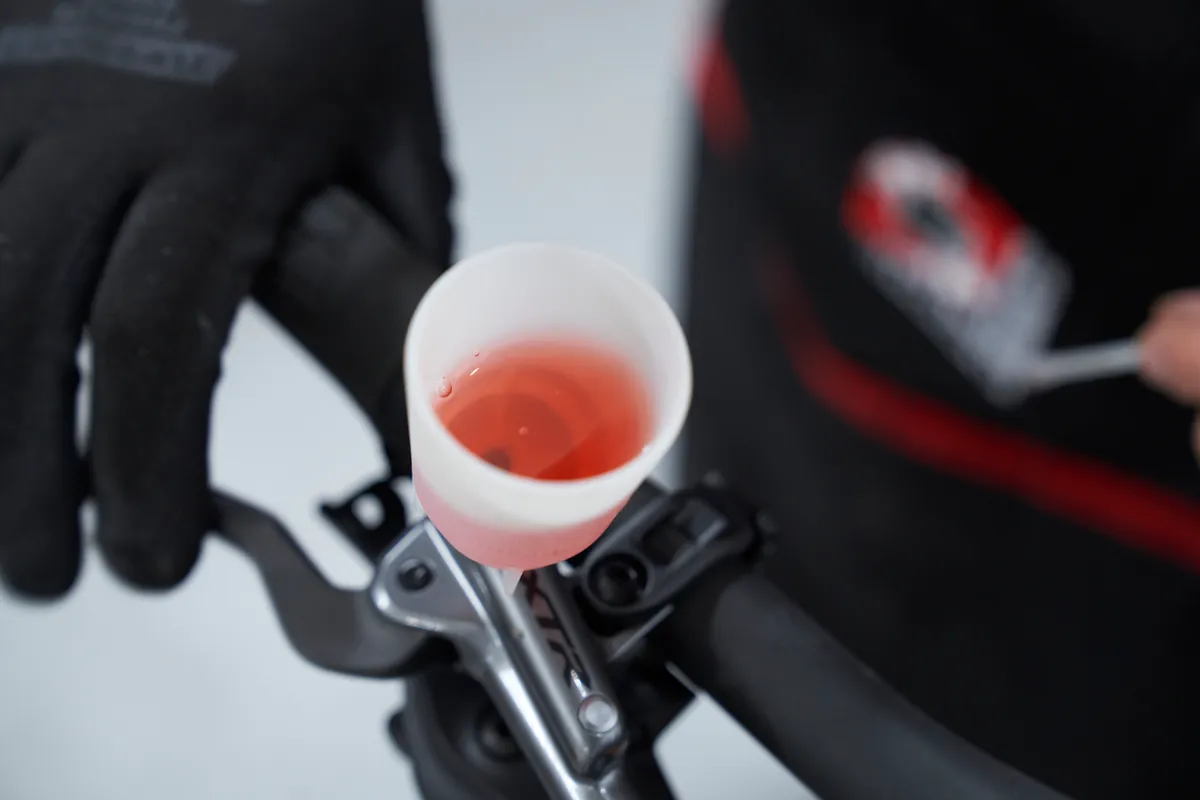
Bleeding hydraulic systems requires special tools, with a full home kit costing about £45 / $55 (plus extra for fluid annually). Alternatively, having a shop do it will cost about £40 / $60 each year, give or take.
Disc brake pads also tend to be slightly more expensive (about £50 / $80 vs £40 / $60 per full set of good ones), but the real-world differences are quite minor when you factor longevity into the equation. Keep in mind, however, that regularly riding in wet, gritty conditions can skew those figures dramatically.
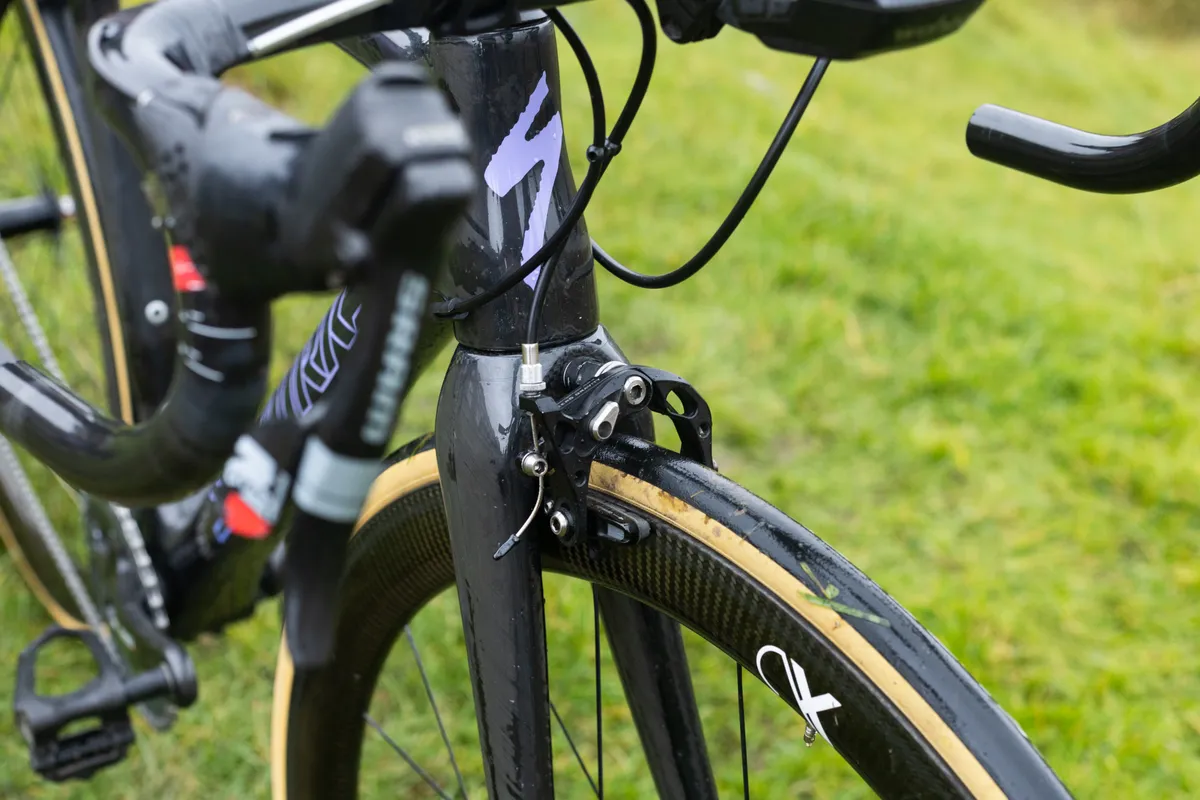
Conventional rim brake cable and housing is far from cheap though, especially if you prefer to use higher-grade stuff (as you should...), so while rim brakes hold an advantage here, the differences aren’t as dramatic as they might seem.
If something actually breaks, however, rim brakes hold a big edge since it’s much easier to diagnose – and repair – a problem.
For most users, hydraulic disc brakes will be akin to electronic equipment: while you can often figure out an issue on your own, most cyclists won’t have the equipment or knowledge to do so.
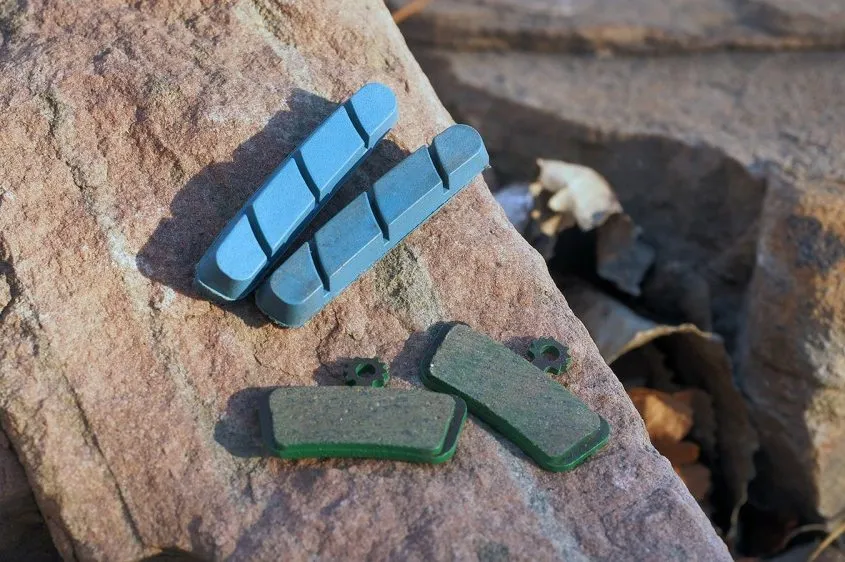
If you’re the type to run things into the ground though, keep in mind that there are definite upsides to not subjecting your rims to regular wear.
Whereas it’s very expensive to replace a rim that’s been worn down from long-term braking, disc brakes only require a new rotor. Speaking of which, those rotors are also less likely to go out of true than a rim.
Will disc brakes replace rim brakes completely? Perhaps not. You can still buy rim-brake bikes, and at the very least, rim brakes will likely live on with smaller brands and niche applications.
But with mainstream brands, the tide has conclusively turned towards discs.
